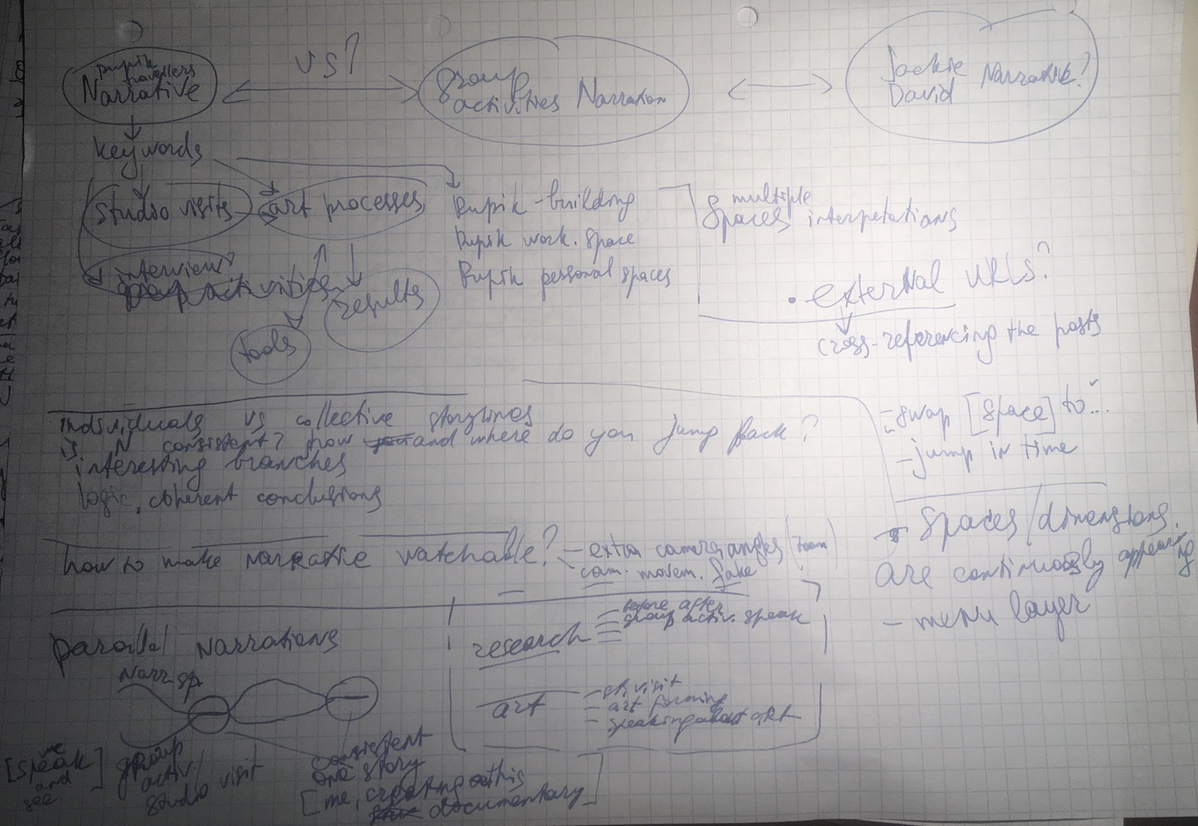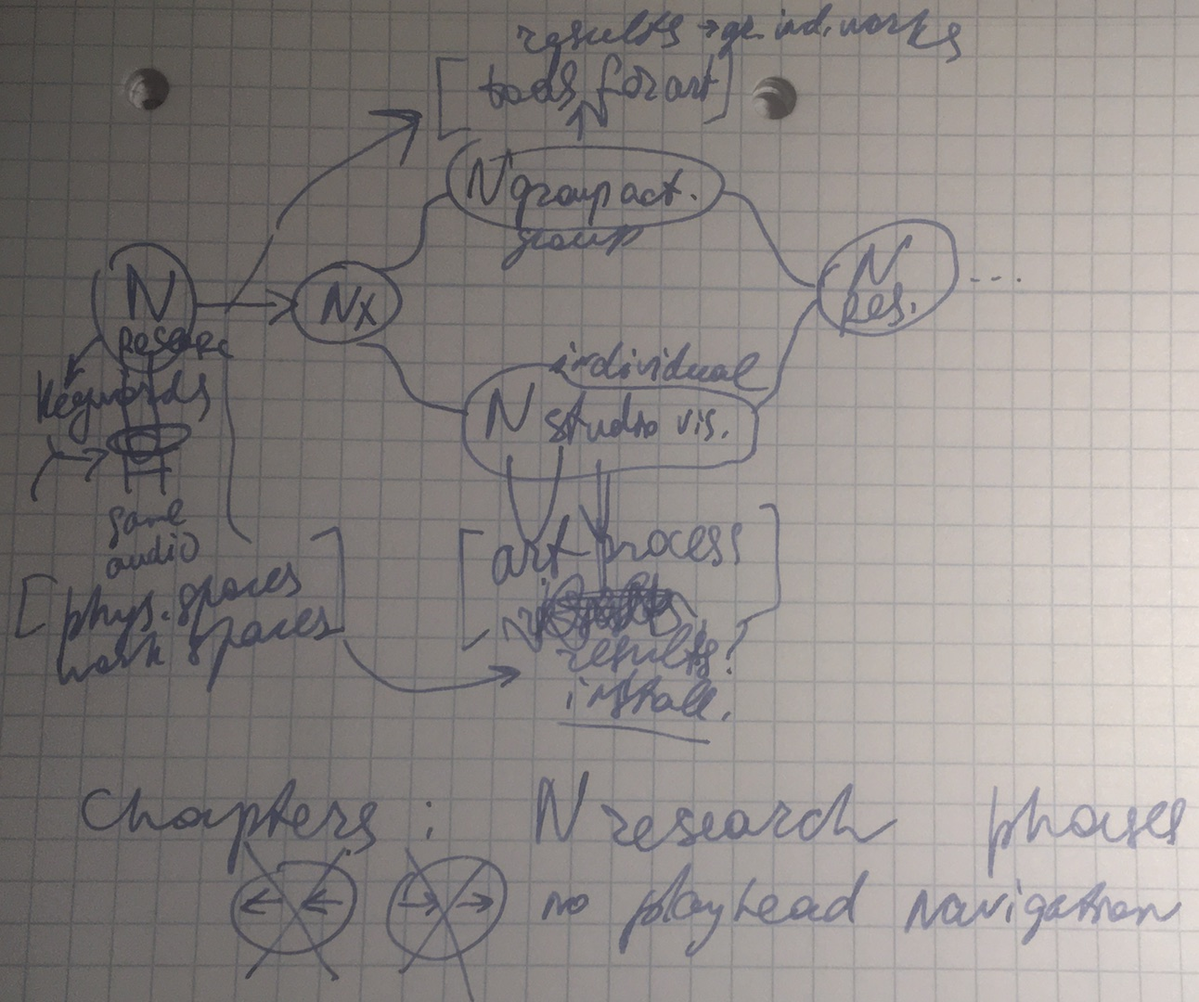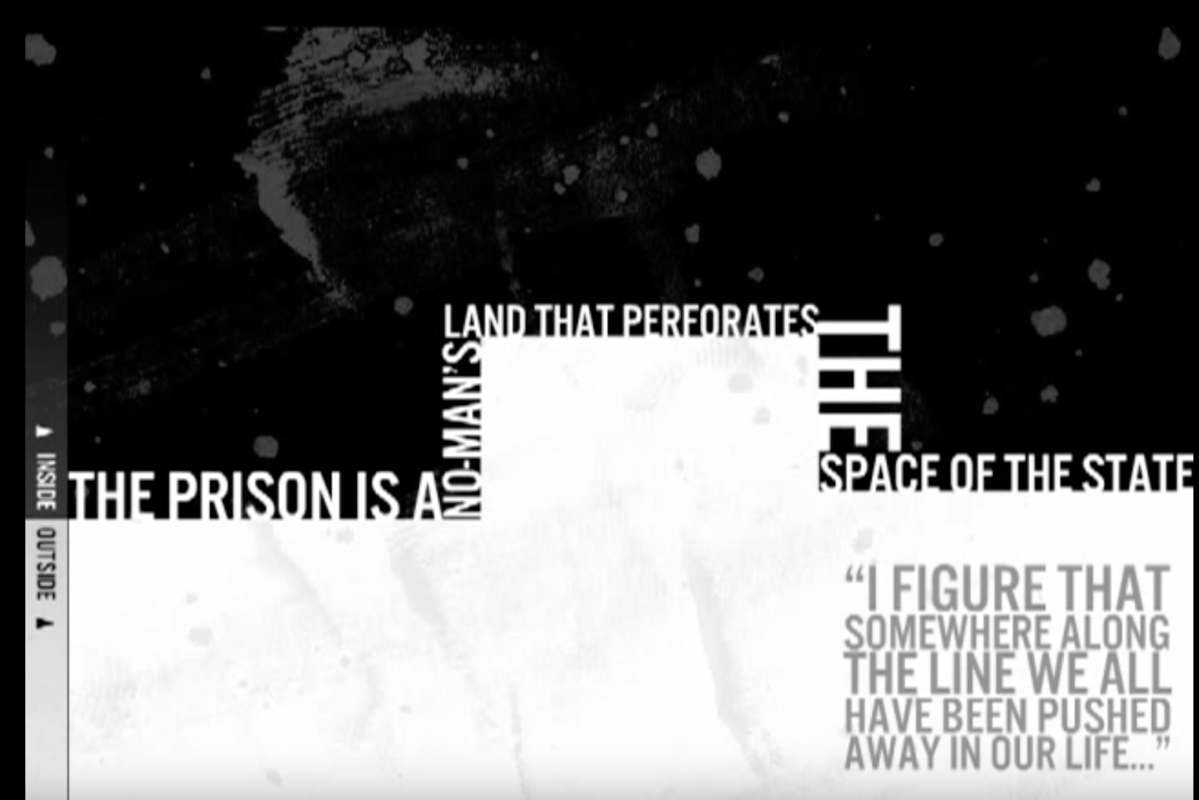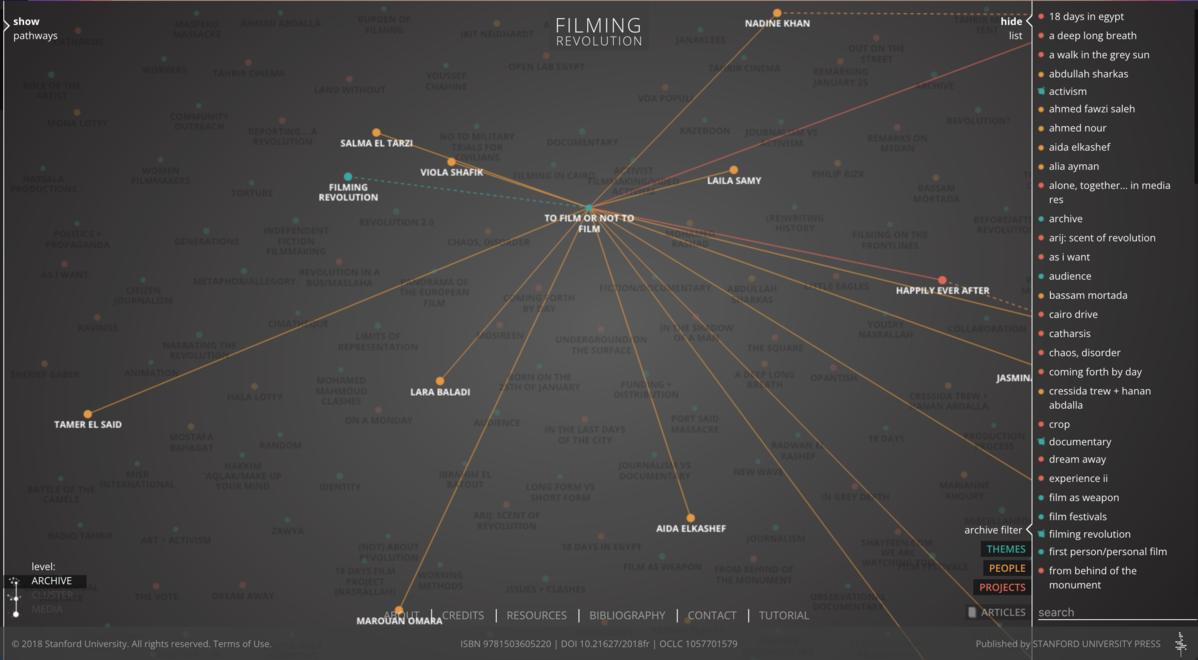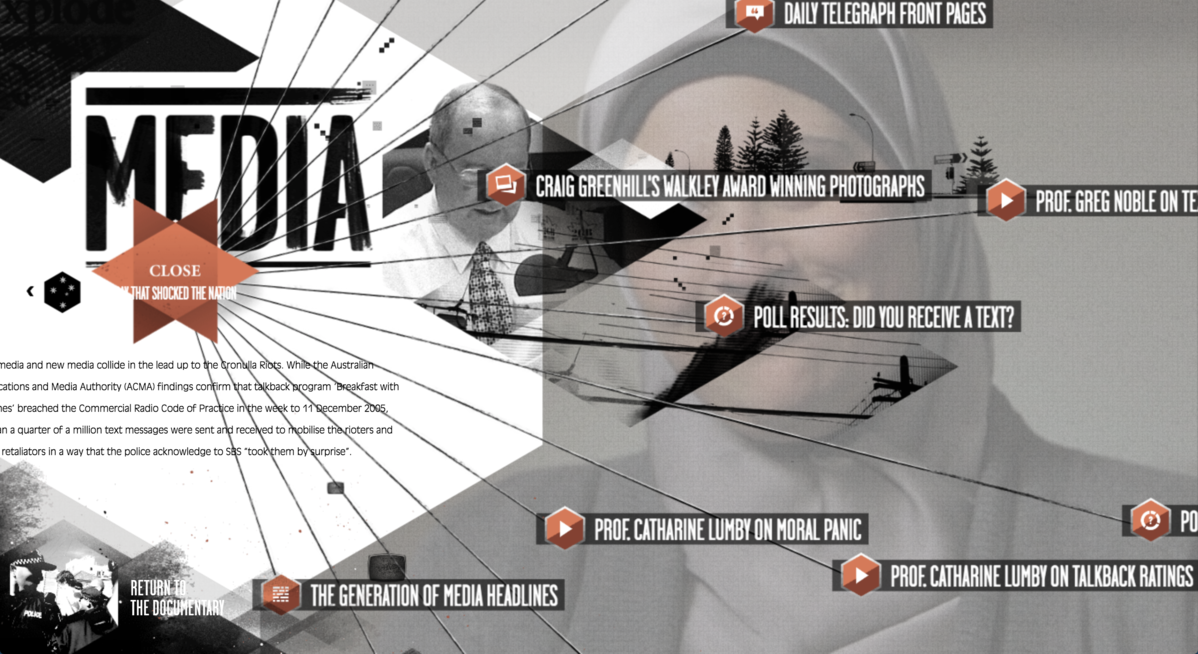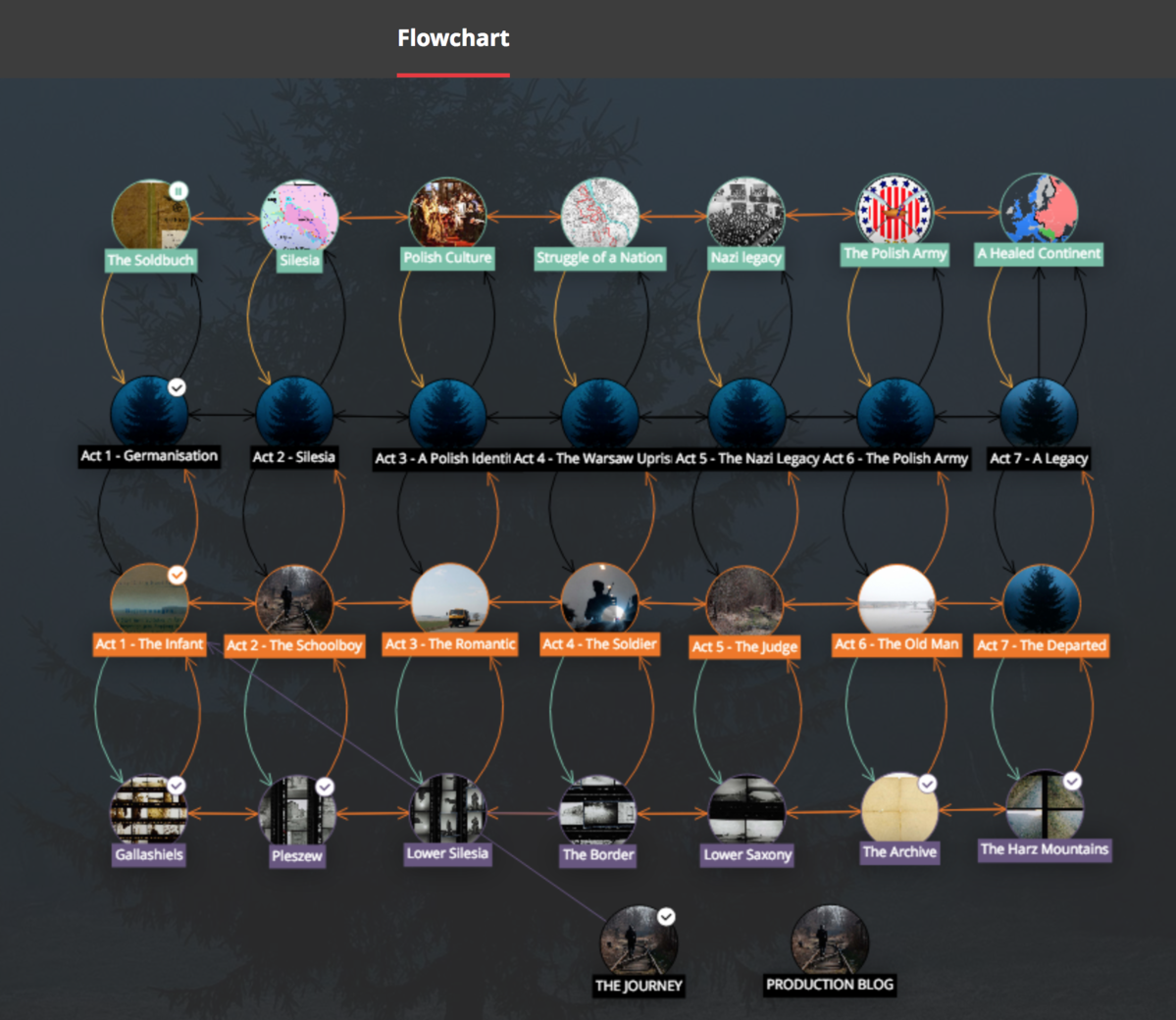Alisa Kobzar (*1989), composer, multimedia artist, teacher, graduated from Kyiv National Music Academy (Ukraine) in 2014 (department of composition, instrumentation and musical informational technologies, prof. A.Roschenko and A.Zahaykevych). Since 2018 lives in Graz (Austria) and studies Computer music in Graz University of Arts (with prof. G.Eckel) and works as SMA in IEM (KUG) in the project “Inter_agency”. She took part in different international composers' masterclasses on instrumental and electronic music, festivals, workshops. In 2016 she was the resident of SME (Studio of Electronic Music) Musical Academy in Krakow (Poland) (Gaude Polonia residence programme).Her music is performed in Ukraine, Poland, Germany, Austria, Sweden, Russia, Ireland, Portugal, Italy. Her compositions include instrumental, chamber, symphonic, electronic (fixed and live), concrete music, mixed electroacoustic music, multidisciplinary projects, interactive projects with gesture sound control (using Leap-Motion, Myo, Kinect, Arduino-based custom controllers), Unity-based theatre-performance interactive compositions, sonification generative multimedia projects, interactive compositions with dancer’s movement control. The main vector of her creative work is interdisciplinarity towards connecting the different art-forms into undisassemblable multimedia, where none of the arts is illustrative. Co- founder of duo rotkäppchen. [Duo rotkäppchen (Alisa Kobzar(music, visuals)+Lisa McGuire(dance)) is an intermedial collaboration between dance, music and visual art, artistic result of which happens in real time and never repeats in the same way with the help of developed the language of nonverbal communication between the dancer and composer/visual artist while active co-following (active listening, active seeing) and immediate reactions.]
expectations vs reality
- the process of the art creation will dominate the regular meetings in my material (reality: almost only during the group meetings everyone was psychologically ready to be filmed)
- the artists will use the same room for simultaneous artworks' creations (reality : the whole territory of the Hotel Pupik, including the castle, became swapped workspaces, and people were not clustered in the same physical space)
- i could be able to film the creative process of each artist during the each day ( in most cases the artists were ready only closer to the end)
- the group dynamics will be very weak because of the lack of time (in reality it became at some points stronger than individual ones, - the individuals were "feeded" by the group)
- the physical space of the Pupik will be mostly empty inviting the artists to open their minds in order to insert an art into the emptiness (in reality the space was full with art (by-)products, which were inviting to come into dialogue or polilogue with them)
filmed material
KWDS: group meetings before/after the trip to Hotel Pupik
Pupik: group meetings*7, people, activities and free time, buildings and interieurs, nature, physical spaces and their openings, castles, reflexions
Group activities: Consuelo - drawing, Franziska - walking, Johanna- drawing, Hanns Holger - writing
Artworks: processes, results, tools
Studio visits: David, Shane, Hanns Holger
Interview: Consuelo - diaries, drawings.
Day 0 - KWDS - 08.04
Footage: preparatory meeting
Day 1 - Pupik (arrival) - 09.04
no footage
Day 2 - Pupik - 10.04
Footage: stones, snow, Elvan (interaction, singing), magnetic drawing (Naya, Shane), guitar - musicing (Fr., Shane, Elvan). Meeting in HH space1. Fr. draws; signs, windows with reflections, stairs, books, masks, random objects on the shelves, crocodile, plant, cooking, stove, castle through the window of kitchen, albums of C., flowers on the table + Fr., table, food, Christmas-trees farm.
(...) to be continued
example of the basic structure:
- research narration of the group meetings as a backbone of the whole a/v experience
- edited narration chapters (condensed days or topics: important for the project development information)
- those topics have keywords, which are cross-referencing another video footage about the physical spaces and workspaces, which could be triggered by user while listening to the continuous narration
- after the "chapter" we have a decision point "Nx", which requires user to decide either he/she wants to watch a group dynamics - group activity cut (with keywords referencing to the tools and individual resulting works after the group activities) or an individual dynamics - studio visits with cross-referencing with the process of art creation (keywords - installation, artistic results of the swap space)
- the "keyworded" footage is a video comment /description on what is constantly narrated in the main video
In order to manage keywording and create a persuasive storyline, narration shoud be transcribed -> keyworded captions should be used in order to allow faster search and navigation in the whole story
Keywording/keyphrasing of the initial meeting
Narration layers for each chapter will be formed out of:
regular meetings - main storyline, which will be divided into 2 narrative baranches, which then again will come together:
- verbal reflexions after the group activities
- verbal content of the studio visit
ideas about the software to use for the interactive video:
interactive storytelling creative guidelines:
Actual time/date of the shots: preserve or not?
how to depict/preserve the actual time or consequence of the shots?
time stamps? placement in the visual slots, marked with a date?
should we preserve the date at all?
About the shot and its relations - facets (Adrian Miles):
"As such we can describe the shot as a whole that has multiple possible relations to any other shot where these relations are determined by where the edit is made (an internal series of relations) and what it is then connected to (an external series of relations). I intend to describe these relations as ‘facets’ as facet has connotations of a shot being multifaceted, of having an enormous number of views, or faces, towards which it looks out towards other shots, where these facets are not just internal to a shot but are constituted by the very possibility of the relations it may form with other shots."
"it is not just each frame that may provide a facet, but also those relations with other shots and edit points that might inform a decision to edit, each
of which in turn can be thought of as providing or having facets. "
editing establishes novel and external relations between parts.
Interactive video as a rhizomatic experience,
"soft video" concept (Adrian Miles):
Softvideo is what happens to video as a form and an object when the computer is the medium of consumption and not merely the means of production and distribution.
Hypertextual method of creating the possible connections between the components of different medias
Literature link: Adrian Miles (2016), “I'm Sorry I don't Have a Story. An Essay Involving Interactive Documentary, Bristol and Hypertext.” VIEW Journal of European Television History and Culture, 5(10), pp. 67–86. DOI: 10.18146/2213-0969.2016.jethc113
"Filming revolution" by Alisa Lebow as an example of an interactive video archive.
Resources on interactive video documentary
some video examples of different authors here
From the article by Stefano ODORICO "Between Interactivity, Reality and Participation : The Interactive Documentary Form"
Interactive documentaries are characterised by the presence of distinctive recurring elements, including intuitive menus, maps, timelines, video clips, hyperlinks, forums, and direct connections to social networks.
it is relevant to point out that old and new media, in our contemporary society, often converge together creating in this way a unique hybrid medium (i.e. interactive documentary) which is able to facilitate access to the content as well as the distribution of it, quoting Jenkins : « Convergence does not depend on any specific delivery mechanism. Rather, convergence represents a paradigm shift – a move from medium-specific content toward content that flows across multiple media channels, toward the increased interdependence of communications systems, and toward multiple ways of accessing media content. »
in web productions we witness the presence of what can be defined as « random access » – the viewer/user can access the narration from a large number of different « windows », thus the content and order of the narration are changeable.
Often in documentaries an explicit narrator is used and this is a recurring feature also in interactive documentaries. The narrator is normally talking from the position of an (omniscient) observer who tells the story and in some interactive documentaries gives us instructions in order to proceed into the narration and to « pass levels ».
I-docs are classified based on several modes of interactivity – conversational mode, where a user navigates a simulation of an existing reality with commands and language unique to human-machine discourse; participative mode, where a user actively plays a role in content-creation; experiential mode, where a user can physically interact with the project by entering a tangible space exposing oneself to an encounter that could alter one’s perception of the world; and hypertext mode where a user can navigate on pre- mapped database narratives (Gaudenzi 2013). Web documentaries, in particular, may contain three interactive structures: the narrative webdoc the favours classical narrative arc in presentation; the categorical webdoc that features micronarratives distributed to showcase a narrative structure; and the collaborative webdoc that exploits the potential of user contribution and participation (Nash 2012).
INTERACTIVE DOCUMENTARY
the way in which we think about and study documentary, centres on a cannon of film and (to a lesser extent) television texts. Digital media complicate this picture, asking us to consider algorithms, software, and shifting relationships between realities, audiences (reimagined as ‘users’), technologies, documentarians, and discourses.
why it makes sense to think of particular digital objects as documentary?
In some cases, a degree of formal, aesthetic or functional continuity is evident. Audio-visual databases and 360-degree video works, for example, might be seen to align fairly unproblematically with documentary as an audio-visual (cinematic) tradition. And yet, when it comes to other projects that to varying degrees position themselves as ‘interactive documentaries’, family resemblances are certainly stretched.
A concern with practices of documenting has been central to attempts to define interactive documentary. One of the most widely cited definitions has been offered by Sandra Gaudenzi who states simply that ‘any project that starts with an intention to document the “real” and does so by using digital interactive technology will be considered an interactive documentary’.
On the academic side, I-docs, a biennial conference on interactive (and now immersive) documentary which began in 2011, has now developed into an active research network. MIT’s Docubase serves as a repository of nearly 400 works that, more or less explicitly, signal a documentary intent but which are also linked to research activity at the MIT Open documentary lab. Scholarly explorations of interactive documentary come from a range of disciplinary perspectives – media and communication studies, digital media studies, computer communication, design and geography – although the most sustained work explicitly engages with the field of documentary studies (the journal Studies in Documentary Film being a particularly important repository of interactive documentary scholarship).
Hybridity
Hybridity is also reflected in the idea of convergence, the amalgamation of technologies and functions. For documentary scholars, hybridity has been used to describe the melding of modes or styles of representation (animated documentary), generic hybridity (docu-drama or mockumentary), and the imbrication of fact and fictional elements across a range of styles.
Hybridity for i-docs means representational hybridity, including digitally generated imagery of various kinds, but also the use of text, immersive imagery, data visualisation and so on.
Two other forms of hybridity : real–virtual hybridity, the ways in which interactive documentaries might layer (quite literally in the case of mixed reality projects) or blend the real and the virtual; and hybrid media logics, the ways in which interactive documentary might blend representation and action.
Interactivity
If a focus on documentary suggests continuity, interactivity points toward digital media as fluid, indeterminate, and relational.
Interactivity might also be understood, from the perspective of the user, as experiential. This shifts the focus to the experience of action – touching, moving, clicking, typing, and so on – and the potential to produce knowledge or understanding through embodied experience.
To approach interactivity from the perspective of discourse is to ask how meanings emerge in the networked relations between users, technologies, documentarians.
interactivity points in several directions: toward textual fluidity, responsiveness and indeterminacy, to the subjective dimension of user experience and to the domain of discourse, and the ways in which our actions take on meaning (or not).
Approaching interactivity as performative, I want to draw out two ideas: performance as a negotiation between various agents within the context of a creative process and performance as an opportunity for (self) presentation.
Documentary is less a representation of reality, but rather a creative act grounded in the ‘multi-layered, performative exchange between subjects, film-makers/apparatus and spectators’ ; it is a series of actions that produce subjectivities, bodies, relationships, and discourses. There are parallels between this performative account of documentary and a sense of interactivity as creating ‘living’ autopoietic and generative documentary systems . A sense of the performative here makes space for the agencies of computation and software , foregrounding indeterminacy, fluidity, and relationality.
digital interactivity is a performance that engages the user like ‘an actor interpreting a role, or a musician interpreting a score, or a dancer performing traditional moves, contributing her own idiosyncratic inflections and absorbing the experience into her personal archive of memories’. Interaction invites creativity and collaboration; it offers freedom, but it does so within a field of possibilities that is structured – socially, technologically, and discursively.
Scholars of interactive documentary draw on concepts and approaches from multiple disciplines: documentary and film studies, cultural studies, media and communication, digital media studies, digital art, cybernetics, psychology, software studies, and human–computer interaction. Interactive Documentary is similarly interdisciplinary in its orientation.
the aim of Interactive Documentary is to explore the ways in which new forms of documentary practice shape our understanding of and engagement with realities.
DOCUMENTARY DATABASES
The database is the quintessential cultural form of the twenty-first century.
Many of the earliest explorations of what documentary might become in a digital media environment were, more or less explicitly, grounded in an exploration of database logic.
There are two key database desires – the desire to escape narrative as a dominant mode of organisation for documentary and, flowing from this, a desire to foster polyvocality, producing a space in which multiple voices might speak.
database offers ways of representing and engaging realities that align with contemporary experience .
In contrast to narrative media, which prioritises both temporal coherence and cause–effect relations, the database need not have a beginning or end, thematic development or any other means by which elements might be obviously connected into a sequence .
Where narrative suggests inevitability, completeness, singularity, the database draws attention to contingencies, alternatives, and the process of construction.
Marsha Kinder’s exploration of database narrative: avant-garde documentary practice provides an explicit touchstone for thinking about the relationship between the narrative and database as communicative logics. Making connections with the work of Luis Buñuel, and a number of other documentary makers, Kinder defines database narratives as ‘narratives whose structure exposes or thematizes the dual process of selection and combination that lie at the heart of stories and that are crucial to language’.
A useful way of conceptualising database documentary is offered by Hayles’ concept of the possibility space. Databases, Hayles argues, are not unstructured collections, but rather collections that are ordered in particular ways to focus user attention and choice. They create a field of possibilities (that may be more or less explicit), within which specific actions become possible (or impossible) and meanings emerge.
Alisa Lebow’s Filming Revolution - The database, conceptualised as a ‘constellation’, a complex arrangement of themes, people, and projects, offers a way of presenting the revolution not as an historic event, but as a field of relations in which new connections are continually being made. For Lebow the non-linearity of the database is political.
Filming Revolution also exemplifies interactive documentarians’ desire to produce forms of polyphony through database practice. Polyphonic new media strategies, Zimmerman argues, ‘reject the singular author, the unique voice, the final interpretation’. Rather, they offer spaces for the exploration of complexity through collaboration and exchange.
<----
INTERFACE
In contrast to the audio-visual voice of the documentary, the database voice does not emerge from the singular arrangement of documentary elements, but rather from the organisation of the possibility space.
Typically the space should be organized considering both the interface and informational structures.
interface works to frame engagement, provide the tools for action and (to varying degrees) promote aesthetic experience . It may make the structure of the possibility space explicit by making the database elements visible, or it may, alternatively, conceal (or selectively reveal) the database elements, engaging users in processes of deduction.
Interfaces might provide interpretive paths, highlight themes, provide a visual rendering of the relationships between elements, facilitate moves between macro and micro engagements with the database, and establish a documentary style.
Manovich’s notion of ‘spatial montage’ is relevant here, pointing to the communicative importance of simultaneously present elements.
spatial relations, which may in some cases dominate the temporal. The interface is critical to establishing coherence between the elements in a database documentary. It has been compared to ‘narration’ in film or television documentary , documentary ‘argument’ , and practices of narrative ‘plotting’ .
Use of metaphors, timelines, or maps, may promote particular ways of conceptualising the connections between elements. Similarly, menus, lists, charts, tables, categories, networks, family trees, and so on communicate something about the database’s informational structure. A mosaic interface, for example, suggests a large collection of data organised non-hierarchically, that in some way adds up to a whole. Organising elements by theme or category, on the other hand, provides a conceptual framework that suggests relationships between elements; or a series of nested menus might promote engagement with informational hierarchies.
Introductory, informational screens often spell this out directly giving the user instructions for navigating, searching, organising etc.
<-- "public secrets" by Sharon Daniel interface
While interactivity represents a challenge to crafting a dramatic storyline, networked databases in particular are capable of linking elements in ways that produce a narrative script in the mind of the audience (Ryan 2004: 9). In exploring narrative databases, I want to draw out three broad logics. Firstly, a logic of accumulation that serves to extend to some extent the user’s engagement with the story world.
database documentaries that are characterised by forms of narrative proliferation. Proliferating narratives may highlight contingencies and alternative possibilities, but they might equally present a number of stories that invite comparison or develop into a collective statement. Finally, I will consider modular narratives which engage the user in the task of constructing a narrative order through interaction. The effect is typically to draw attention to the fragility of narrative and its limits as a means through which to understand experience.
A Polish Journey is an interactive ‘road trip’ in which Julian Konczak travels through Central Europe to try and make sense of his father’s forced recruitment into the German army, his ultimate migration to the UK and the legacies of this for his own identity and his relationship with his now adult son. The narrative unfolds over seven ‘acts’ arranged chronologically, documenting the journey through practices of image making. Accompanying this seven-act video narrative is a networked database of materials that is both evidentiary and evocative. The database literally surrounds the central narrative, inviting the viewer to scroll up or down in order to understand more of the historical context or to engage with elements that seek to evoke place. Konczak describes this as a multilevel narrative structure, in which each fragment is self-contained while contributing to an overall narrative arc . A ‘flow map’ allows the user to see this multilevel narrative .
<--
Drawing inspiration from Borges’s The Garden of Forking Paths and the potential of radically labyrinthine storytelling; forking path narratives provide one or more decision points which expand the narrative to create one or more parallel stories.
The live documentary performance, based on the popular children’s book series ‘Choose your own Adventure’, Choose your own Documentary can be conceptualised as a live, collective navigation of a documentary database narrative.
Database documentaries may also be structured as parallel narratives in which two or more stories are presented alongside each other. Parallel narratives may be similar in their logic to some non-narrative database forms, particularly the mosaic .
Burn Out/Le Grande Incendie makes use of parallel narrative to draw attention to competing discourses around self-immolations in French workplaces. The database consists of two narrative ‘tracks’, represented as two intersecting waveforms. One narrative tells the stories of the families and colleagues of those who took their lives, while the other presents an official ‘company’ discourse. Interacting by moving between the two perspectives becomes a process of comparison that serves to highlight the incommensurability of the two perspectives, and thereby revealing the challenge inherent in producing change. Parallel narratives may also invite comparison so as to reveal similarity.
Modular narrative is characterised by the introduction of a disjunction between the temporality of narrative events and the order of their presentation.
Database documentaries, particularly those created to meet the needs of institutions, are frequently oriented around a strong central narrative. The database serves to expand the story world, appealing to a desire to know more deeply through exploration and/or investigation.
Parallel narratives may invite comparison or provide collective illustration or evidence.
Finally, modular narratives most clearly draw attention to the fragilities and inadequacies of narrative as a way of engaging realities. In challenging users to make narrative sense of the elements of the database they open up a space for reflection on the dominance (importance?) of narrative for sense-making, history, and memory.
categorical databases seek to organise elements into a range of ‘categories’.
While categorical films may include ‘micro-narratives’, their overall organisation is ‘topical rather than narrative’.
Seven Digital Deadly Sins makes an appeal to the idea of the seven deadly sins as a way of categorising the myriad of challenges presented by digital technologies.
Cronulla Riots: The Day that Shocked the Nation takes a categorical approach, in combination with modes of narrative engagement, to draw attention to various factors that sparked race riots in the Sydney suburb of Cronulla in 2005. The database invites multiple modes of engagement. Exploring a map and timeline of police reports invites a modular engagement with the events as narrative, challenging the user to connect events to produce a story of ‘what happened’.
<--
Nichols approaches the documentaries of Fred Wiseman as collections of sequences (facets) that, while having different degrees of narrative organisation themselves, are not organised according to an overarching narrative logic. The effect, Nichols argues, is to represent reality as a web of interconnected elements, influences, and patterns and to draw attention to the complexities of social issues.
—from book Kate Nash INTERACTIVE DOCUMENTARY
